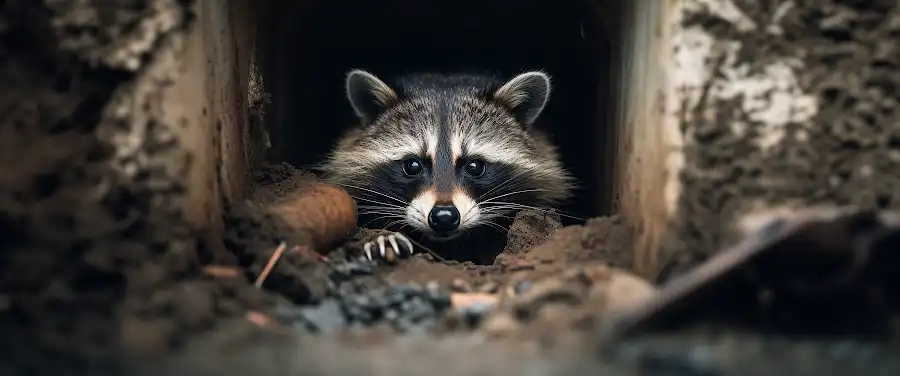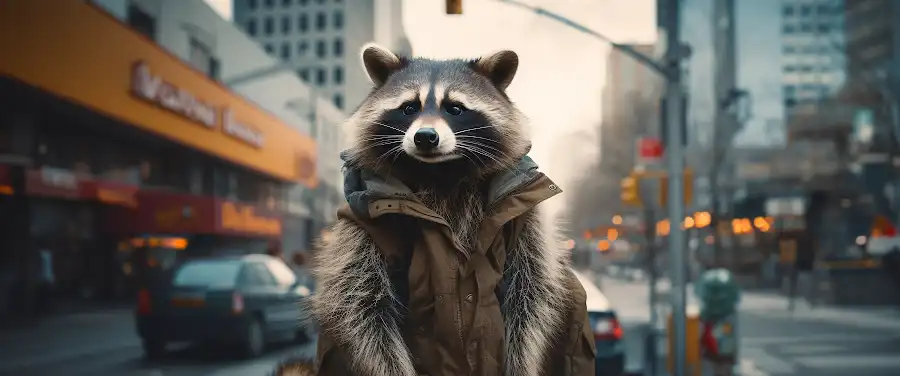
In the twilight of a bustling metropolis, just as the city lights begin their shimmering spectacle, a sort of “urban wildlife” commences its nocturnal hunt – the intelligent, adaptable, yet somewhat disruptive, raccoons. This isn’t a wild forest, but the very heart of your city, where the outdoorsy scent of mother nature has been replaced by a symphony of honking cars, bustling cafes, and towering skyscrapers. Somewhere amidst the chaos and concrete, these city raccoons have found an unlikely home, turning our neighborhoods into their personal playgrounds.
Not that anyone invited them, of course. But these masked miscreants are as sly as they come. Witty enough to outsmart our most intricate trash can designs, and brave enough to venture deep into the human realms. What began as a whisper of raccoon populations stirring in our peripheries, has turned into a loud clatter. A raccoon infestation right under our noses, and unfortunately, it’s more than harmless pranks and overturned trash cans.
Every night, while the city sleeps, its raccoon population works overtime. They gnaw on power lines, raid garbage bins, and damage properties, causing a nuisance most urban dwellers could do without. Over time, their presence has amplified, morphing into a pressing urban problem that demands our attention. The fact is, raccoons are here, and their futures, for better or worse, are intertwined with ours. But why have these creatures chosen concrete jungles over natural forests? Stay with us as we delve into why raccoons have become such a significant problem in urban areas.
What Issues Do Raccoons Pose in Cities and Towns?

In recent years, the size of raccoon populations has exploded in urban settings, creating significant and complex issues. The problems caused by raccoons in urban areas extend far beyond their status as pests. These adorable critters can pose serious threats to public health and safety, create conflicts with other city-dwelling animals, and result in substantial property and infrastructure damage. Particularly troubling is their interactions and potential dangers to pets and children.
Rodents are a delicate issue that need effective handling. Their destructive capabilities extend beyond mere annoyance to potential property damage and health hazards. To avoid such circumstances, keep a watchful eye on the possible rodent entry points, food sources and what you might unintentionally be doing to invite a home infestation.
Now, let’s perennially shift our lens to understanding precisely what types of property damage these rodents can lead to when left unchecked.
How Are Raccoons Damaging to Properties?
Raccoons can seem harmless, but they are notorious for their destructive nature. From burrowing and scavenging to outright damage of rooftops, gardens, and trash cans, raccoons can wreak havoc in your property. By their crafty use of their nimble hands, they can literally pull infrastructures apart, leading to significant structural damages to buildings, a major facet of property damage by raccoons.
How Can Raccoons Affect Human and Pet Health?
No discussion of the problems caused by raccoons in urban areas would be complete without mentioning the potential health implications. Raccoons carry diseases like rabies and raccoon roundworm, which can be transmitted to both humans and pets. The risks of physical encounters with these creatures are as real as they are unexpected. Being scratched or bitten by a raccoon can result in severe infections apart from exposing you to these diseases. This inter-species interaction, often tagged as raccoon-human interaction or pet dangers from raccoons, warrants careful consideration due to its potential implications on health.
According to the Centers for Disease Control and Prevention, “Raccoons are the most common wild animal with rabies.”
Raccoons also pose a lesser-known but deadly health risk to pets, particularly dogs. Apart from the risk of contracting diseases, fights between raccoons and pets can result in serious injuries.
As we analyze these aspects, it’s clear that the dangers from raccoon hazards are multi-faceted, affecting multiple aspects of urban living. The critters’ potential for both property destruction and disease transmission makes them a serious urban problem.
Understanding these problems caused by raccoons in urban areas is just half the battle.
Conclusion
So, we’ve spent quite a bit of time talking about the problems caused by raccoons in urban areas. We’ve seen how these stealthy critters can wreak havoc in city neighborhoods, causing everything from property damage to health risks. The truth is that dealing with these urban raccoons is more than just an inconvenience. It’s a serious challenge.
But it’s important to remember the bigger picture here. We’re all part of a balance that includes our urban environments and the wildlife that inhabits them. It’s not just about chasing off raccoons or cleaning up after them. It’s about understanding our urban wildlife balance better and building cities that can coexist with nature rather than always being at odds with it.
The troubles caused by raccoons shed light on the broader impacts of urban development. They’re a reminder that pushing nature out can have unintended consequences. It’s not the raccoons that are the problem, really. They’re just trying to survive. The problem is how we – as humans – manage our shared spaces.
Closing thoughts? Well, it’s pretty simple. You might see raccoons as pesky troublemakers, but they’re also a symptom of a larger issue – our interaction with wildlife in an increasingly urbanized world.
We need to think long and hard about our urban development impacts and strive to create spaces where humans and wildlife can safely coexist. Remember: Balancing urban development with wildlife conservation isn’t just good for the raccoons – it’s good for us too.




